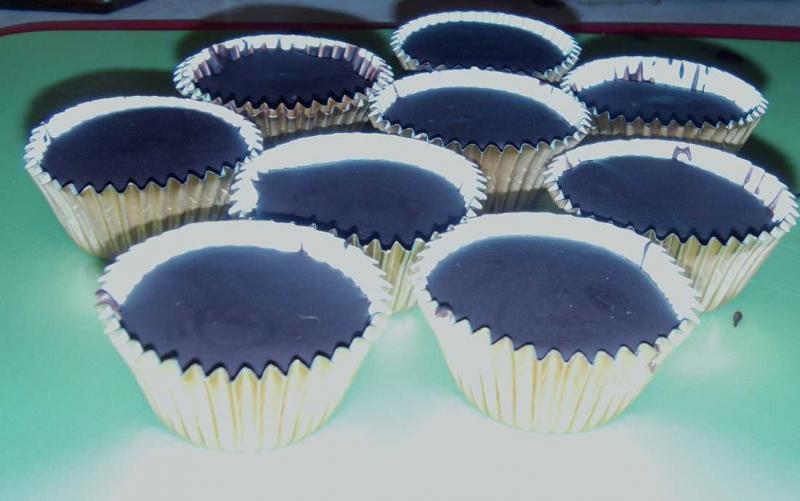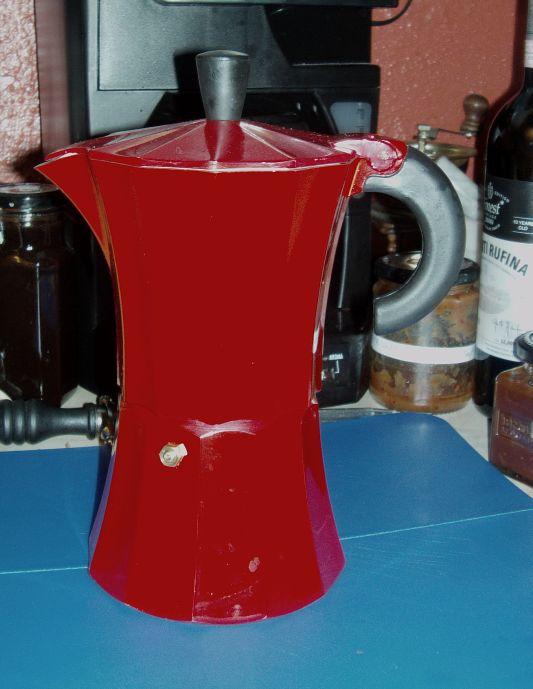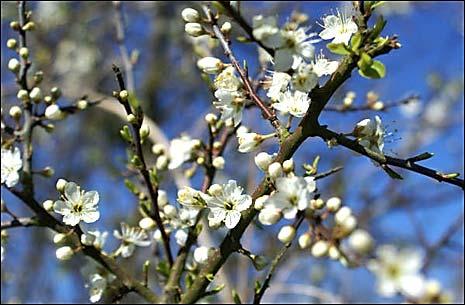
JimmyD
participating member-
Posts
14 -
Joined
-
Last visited
-
That Creme de Violette is something I've never seen before ... but giving me food for thought ... is it like the violet sweets (candy) you used to get?
-
Every once in a while I read something on here that makes me smile. This really is one of them. Not because I think it's a foolish question or for any negative reason but because, not only do I not know the answer, I hadn't even thought of asking the question! And now I may very well have to do some serious testing. I'm English. I am also a coffee lover. But the simple fact of being English means that I was raised on tea. Blended, indian, usually assam based. Only at university did I really start to experiment with different varieties. Now that I'm older (dear God, I actually wrote that!) I have become rather fixed in my preferences - Twinnings Earl Grey; Jacksons White Tip and Jacksons Peppermint ... yet once in a while I still like single varieties lapsang in particular. Whichever the type of tea, though, three things my grandmother taught me always stand true: 1) warm the pot 2) always use boiling water 3) never over-brew (steep) If you have a look online - hang on, I'll do it for you - this is my regular tea pot: http://www.amazon.co.uk/Bodum-UK-Classic-stainless-infuser/dp/B000GDXV6Q/ref=sr_1_2?ie=UTF8&qid=1300557923&sr=8-2 Fill with boiling water, allowing the pot and infuser to come to temperature: empty the pot; add your tea and refill with boiling water. No tea that I've ever used needs more than 3 or 4 minutes to infuse .. I know that some are supposed to sit for 15 minutes but I just find they become bitter. I prefer to use more tea and infuse for less time. Once it has brewed, you can remove the infuser and replace the lid (not a great fit on this tea pot, I admit .. but then my second cup has usually been finished within 15 minutes). As for keeping tea: if I had to, I'd use a small thermos with the type of cap that partially unscrews to pour, yet keeps the heat within the flask. In addition, I would certainly only keep 'tea' in there - by which I mean don't add sweetners, lemon, milk or anything else. I would also never use a flask that had been used to store anything else. (I don't know about the rest of you, but I can always taste residuals from flasks so I keep one for whatever liquid I'm storing). However, if my grandmother heard that you were trying to 'store' tea you would get a look that only Medusa could have a chance of replicating. And here's the rub that I fear my tests might well bear out: for her taste (and probably mine) tea should be brewed fresh everytime (?)
-
Kerry, that's wonderful - it's even on my birthday! But it's also over 3000 miles away so I'm going to have to decline. Still ... loving this site for ideas. Seems I'm going to have to teach myself a new skill set. )
-
There are some fantastic presentation skills on here, but I am really amazed by some of the chocolate work - those hexagonal shells and coffee cups above .... where do we mere mortals find the secrets to making something like that?
-
Now that's a masterpiece!
-
Damson Brandy Chocolates Been playing with this recipe for a few weeks now and finally come to what I (and my little army of tasters) think s perfect. A milk chocolate base at 30% cocoa, a ganache centre made with a dark chocolate, double cream and damson brandy, surrounding a whole toated almond before being covered with dark chocolate at 85% cocoa. Approximately 180 calories each, they pack one of the biggest chocolate 'hits' I've ever had while at the same time being realy well balanced and not too overpowering. Sorry for the lousy photo:
-
We need a biochemist to discuss this one and that's certainly no me. I do know that in wine the levels of polyphenols give the astringent and bitter parts of the taste. These molecules bind with proteins. When you taste the drink, they bind with the proteins in saliva. In short, they give the body and feel to the drink. The sharpness to a young wine high in tannins and the more mellow feel to an older wine. With a 6 month old sloe gin there is certainly still a degree of astraingency but it is by no means unpleasant and creates the familiar sweet/sour notes. A 6 month bottled gin that has aged to 3 years certainly feels more mellow in the mouth as well as having a rounded and more complex taste with few(er) bitter afternotes. I am unsure as to the reduction of tannins at the start point of the steeping process, but would love to hear from anyone who has either a practical or theoretical take on this. As an aside, I still have a small number of sloes that have been frozen since late October .. give me 4 months or so and I can probably give some answer myself.
-
By all means try your damson gin, but my preference for damsons is brandy or vodka.
-
Now that's interesting ... how well do the flavours compare?
-
Pears in red wine: 15 pears, peeled and cored 2 bottles of red wine 2 large oranges, sliced 2 lemons, sliced 2 cinnamon sticks 6 cardamom pods brown sugar ... erm ... about 'that' much Place all in a large pan and simmer until the pears are soft. Spoon the pears into warm jars along with a slice of orange and lemon then pour over the (now) mulled wine after passing through a strainer.
-
Do you know what you have? At that size, is it muntjac? You can roast it. It likes to be bound in bacon to keep it moist; baste regularly (do you have a rotissary it will fit on?); it loves rosemary and like all of us it'll always benefit from a generous amount of red wine. You can also finish with a honey glaze, but apricot or cherry are good too. Keep it simple and enjoy!
-
Hi all my brother is the one who usually brings the good kitchen stuff, but he failed to make it to the family home due to weather and transport problems. The rest of my family don't often manage to get the kitchen gifts right. I have half a dozen wall plaques featuring wine bottles, produce and french women in varying degrees of corsetry with which to adorn my kitchen along with a nice new bar optic ... I don't know what the message was there. Past experience has taught me that when it comes to the kitchen you should buy your own .. so here's my gift to me:
-
Hi all, just wanted to add a little to this thread as it is one of my favourite topics. Most of the commercial producers do not steep with berries. Instead, they use a syrup made from sloes and sugar which is then mixed with their proprietary gin. To reduce costs (and because it is not necessary to the flavour) many also reduce or remove the botanicals in the gin itself. This produces something akin to sloe gin but it is far sweeter than the real thing and pretty much only useful for adding to a screwdriver to make a sloe screw. I have never found the Plymouth sloe gin here but I am glad to see that a mass producer is at least attempting to make the real deal. There are only two ways to get the real thing. The first is to make it yourself. This starts in May by identifying your blackthorns. These are easily spotted at this time of year by the flowers: The berries themselves are harvested between September and November. Pictured below, look for the leaves and the thorns to ensure you're picking sloes and not wild cherries. These are the wild cherries: The bush has a broader leaf, no thorns and the fruit themselves grow on stalks rather than directly from the branch. As for steeping the berries, a rough rule of thumb is 8oz of sloes to 4 oz of sugar and 1 pint of gin. It's been said before that you do not need to go for a 'good' gin. You do want a 40% spirit if possible as the alcohol is the medium to carry the flavour but there is no need to use something with lots of juniper and other botanicals as these flavours will be masked anyway. Dutch jenevar is a wonderful base spirit but if using this go for the jonge jenevar. There is something of a myth as to when to pick the fruit. It's said that you should wait until after the first frost. There are two reasons for this: 1) you will ensure that the fruit has developed as much sugar as possible; and 2) the frost tends to split the skin of the fruit. So long as your fruits are ripe you can pick from September. Obviously, the timing will depend on the summer weather. If you do pick early, then you will want to break the skins. Traditionally, you use either silver or a thorn from the same bush the fruit was picked from. The fact is that metals can react with the fruit and result in a metalic taste in the end product. The simplest way to break the skins and cell structure down is (as has been said above) to freeze overnight and add the gin directly to the frozen berries. Steeping draws flavour from the skins and stones as well as the flesh of the fruit. After you have steeped for 3 months, taste the liquer and add more sugar if required. As with all things, remember it's far easier to add than to take away, so take your time over this. The stones give a flavour similar to almond and vanilla. If these are not coming through, you can add a drop of vanilla essence per pint or a few blanched almond flakes. The second way to get good sloe gin is from myself (when we finally get full production up and running in a few years time) or in the meantime from the only other good producer is know, sloemotion - www.sloemotion.com Hope you found this informative or at least interesting.
-
Hi all. This is something of a self-introduction as it's my first post on here. I'm what you would call an enthusiastic amateur who, though I have served time in various kitchens, is self taught. My own love is growing my own anything and then finding the perfect something to make from it. Over the years I have developed half a dozen drinks ranging from an elderflower based spritzer in the spring through to sloe gins for the winter. The last two months have been spent developing chocolates based on these drinks .. and this leads me to my question: I have the flavours perfected, but I'm still not happy with the moulding or the tempering so can you advise me where to look for advice on these things - either in the forums here or books that you have found helpful? Thanks in advance, Simon



